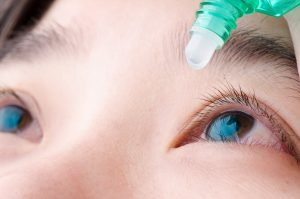Redness in the eyes can occur for a variety of reasons, including lack of sleep, allergies, stress, dry eyes, foreign particles, exposure to chemicals, drug reactions, glaucoma, or infections. If you experience red eyes, there’s no need to panic or immediately use any type of eye drops.
Conjunctivitis, commonly known as sore eyes or pink eyes, is a frequent cause of eye redness, especially in the Philippines, where it tends to spread during the summer or school vacation season.
Common Causes of Red Eyes
When dealing with red eyes, ask yourself these questions:
- Did you rub or scratch your eyes? Over-rubbing can irritate the eyes and cause temporary redness.
- Did you lack sleep or stay up late? Fatigue can lead to redness, especially if you spend prolonged hours in front of screens.
- Did something enter your eye? Foreign objects, such as dust or chemical irritants (e.g., soap, shampoo, or makeup), can cause redness.
- Are others around you experiencing similar symptoms? Redness from infections, such as conjunctivitis, is highly contagious and may spread within households or groups.
When Redness Indicates a More Serious Issue
- Mild Irritation. Redness from rubbing, lack of sleep, or minor irritants usually resolves within a few hours or a day. Often, this is accompanied by watery eyes but no significant pain.
- Allergic Reactions. If redness is accompanied by itching, clear watery discharge, and symptoms like sneezing or nasal congestion, allergies may be the cause.
- Infectious Conjunctivitis. Viral or bacterial infections may cause redness, itching, watery or thick yellow-green discharge, sensitivity to light, and swelling.
Types of Infectious Conjunctivitis
- Viral Conjunctivitis.
Caused by a virus, this type often resolves on its own within a few days to a week. It spreads easily through contact, so avoid touching your eyes and practice good hand hygiene. - Bacterial Conjunctivitis.
This type has symptoms similar to viral conjunctivitis but includes thicker, yellowish-green discharge (pus). It may cause a gritty sensation and significant pain. Immediate consultation with an ophthalmologist is essential, as untreated bacterial conjunctivitis can lead to complications.
Myths About Sore Eyes
One common myth is that you can catch sore eyes by looking at someone who has it. This is not true. Both viral and bacterial conjunctivitis spread through direct contact with contaminated eye secretions, such as via hands, tissues, or shared objects like doorknobs.
What to Do When You Have Red Eyes

- Avoid contact lenses. If you wear contact lenses, switch to prescription glasses until your eyes fully recover.
- Be cautious with remedies. Some people suggest putting breast milk in the eyes, but this is not recommended as it can worsen the infection.
- Avoid over-the-counter medications. OTC eye drops with antibiotics or steroids should only be used under medical supervision. Redness caused by allergies or fatigue may benefit from basic lubricating eye drops, but ensure they are steroid-free.
- Consult a doctor if symptoms worsen. Viral conjunctivitis typically resolves on its own, but if you experience thick discharge, severe pain, or prolonged redness, seek medical attention immediately. Some bacterial infections can rapidly damage the eyes if untreated.
A Special Note on Glaucoma
Eye redness can also be a symptom of glaucoma, a serious condition that can lead to permanent vision loss. If you are unsure about the cause of your red eyes or experience additional symptoms such as blurred vision or intense pain, consult a doctor promptly.
Final Thoughts
While red eyes are often harmless and temporary, they can sometimes indicate more serious issues. Proper hygiene, avoiding eye rubbing, and consulting a doctor for persistent symptoms are key to maintaining eye health. Avoid experimenting with unverified treatments and let an eye specialist guide you toward the appropriate care.


